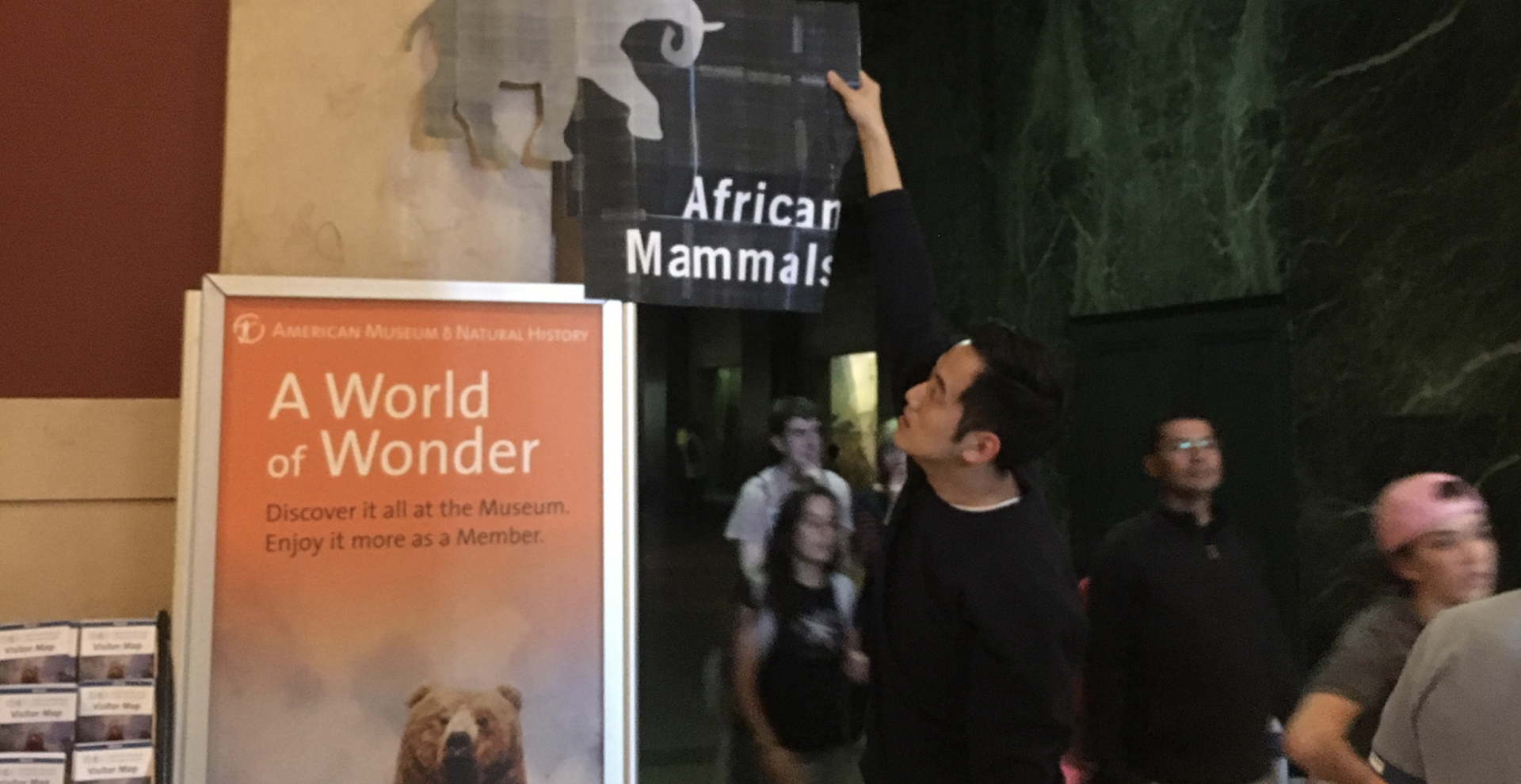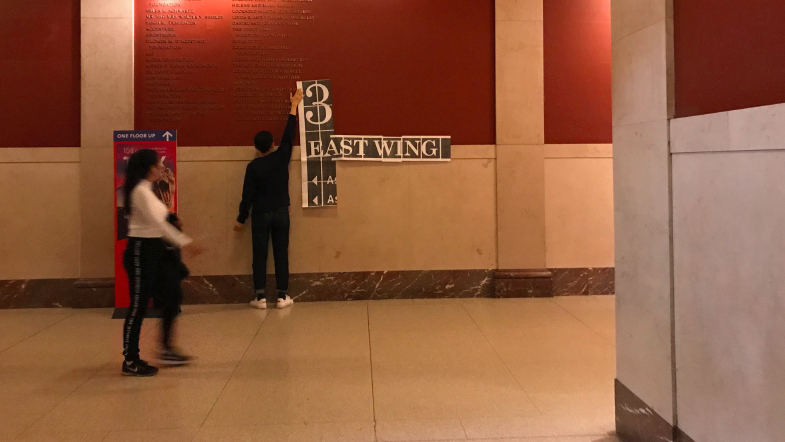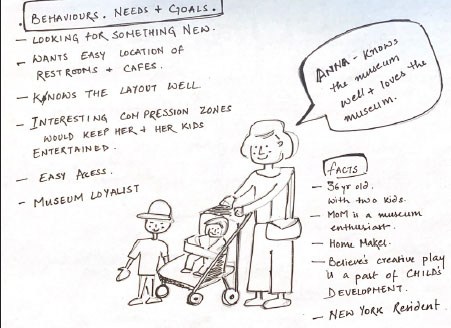

The client: New York’s American Museum of Natural History (AMNH)
The class: Exhibition Graphics 1 is for second-semester students in FIT’s MA in Exhibition and Experience Design program
The brief: Few AMNH visitors use the large, cavernous rotunda entry and stairwell that leads from the lower level to the fourth floor. Instead, they use the elevators. AMNH wants to change that. The space has the potential to display additional exhibition content and reduce congestion. Activating the stairwell has long been a dream project for AMNH designers, said Christina Lyons, chair of the department, who taught the class. “For a graphic designer, it’s a great opportunity.”
The assignment: Turn the stairwell from a space into a “place,” via innovative wayfinding and experiential graphics that align with the institution’s aesthetic and mission. (“Placemaking,” Lyons explained, is an industry term for making spaces meaningful.)
Additional learning: During the semester, industry professionals visited the class, including an authority on fabrication, materials, and installation; a visitor experience expert; and a designer and creative director who has addressed similar challenges. Many of the students won scholarships to the 2019 International Sign Association’s annual expo in Las Vegas, where they saw cutting-edge technologies, materials, and applications, some of which they used in their AMNH proposal.
The Design Process
Step 1: Meet with AMNH director of graphic design, Catharine Weese. Interview AMNH designers about their needs, goals, and dreams for the project.
Step 2: Survey the site. Measure the space and document existing graphics, colors, typography, architectural details, materials, and circulation routes.
Step 3: Conduct audience studies that involve onsite observations and interviews with visitors, staff, and AMNH volunteer docents. Create “persona studies” to draw conclusions about visitors’ needs and desires.
Step 4: Present concepts to the client, then create prototypes of design components and test them on site. The concepts were a series of subtle content cues, such as carefully organized “fun facts,” that directed visitors up or down the stairs. One student proposed a shadow-and-light show for the staircase leading to the elephant exhibit.
Step 5: Get final feedback on the proposal from the client. Lyons said, “The comments encompassed many practical considerations—such as budget, maintenance, approval processes, and schedule.”




